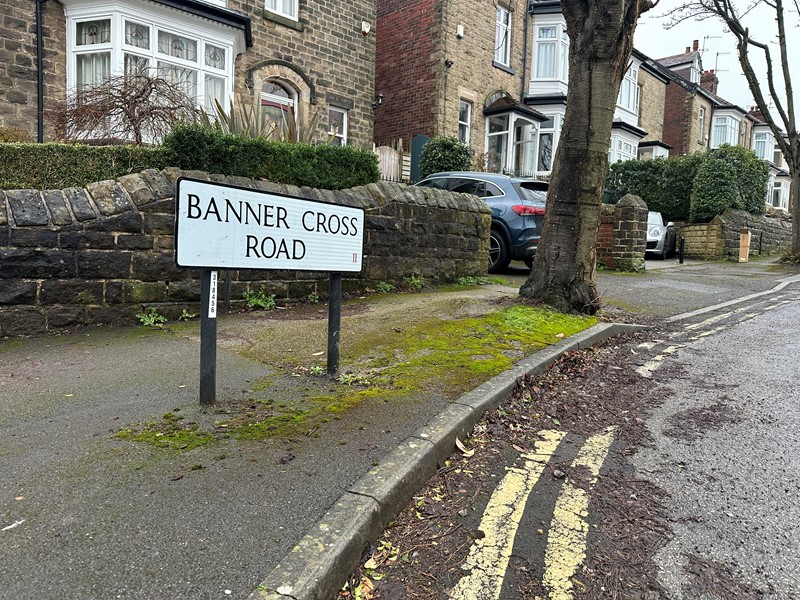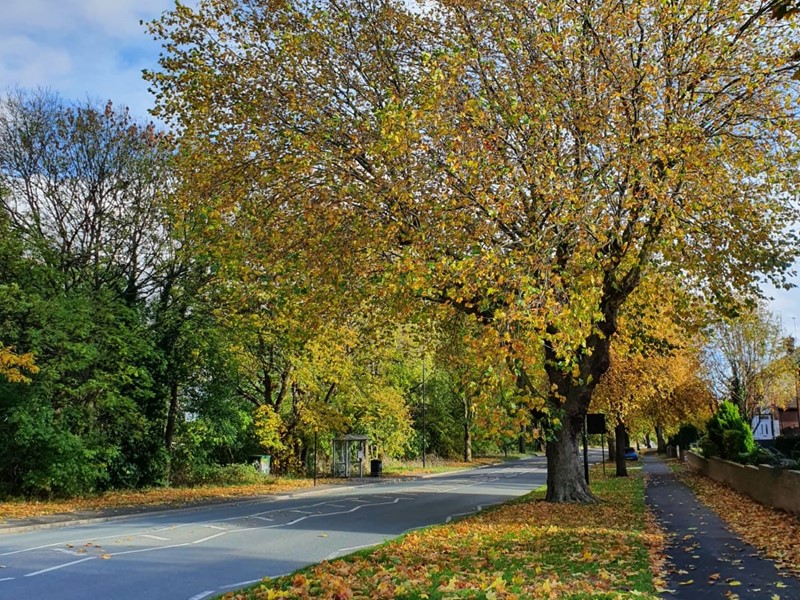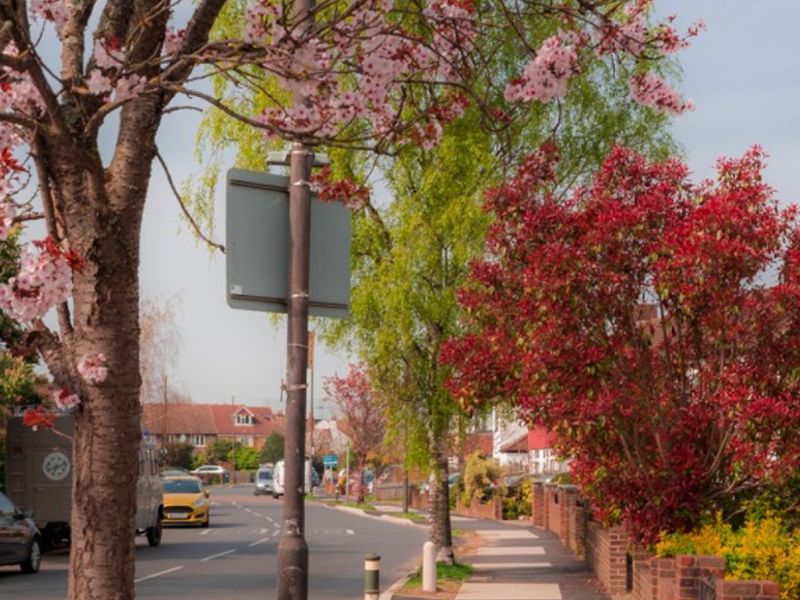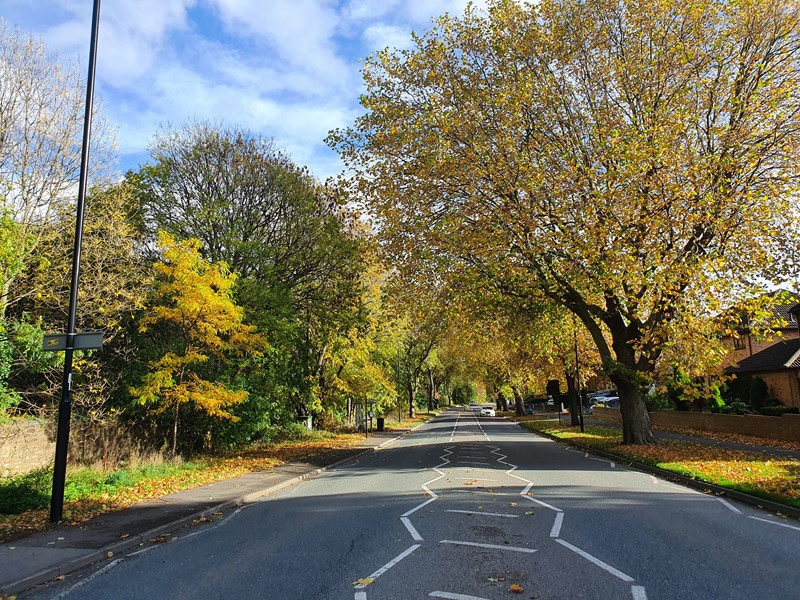The first phase of consultation is to begin next week for the proposed delivery of highways maintenance works needed on Dunkel Road, Banner Cross Road and Silver Hill Road.
FAQ on diseased street trees
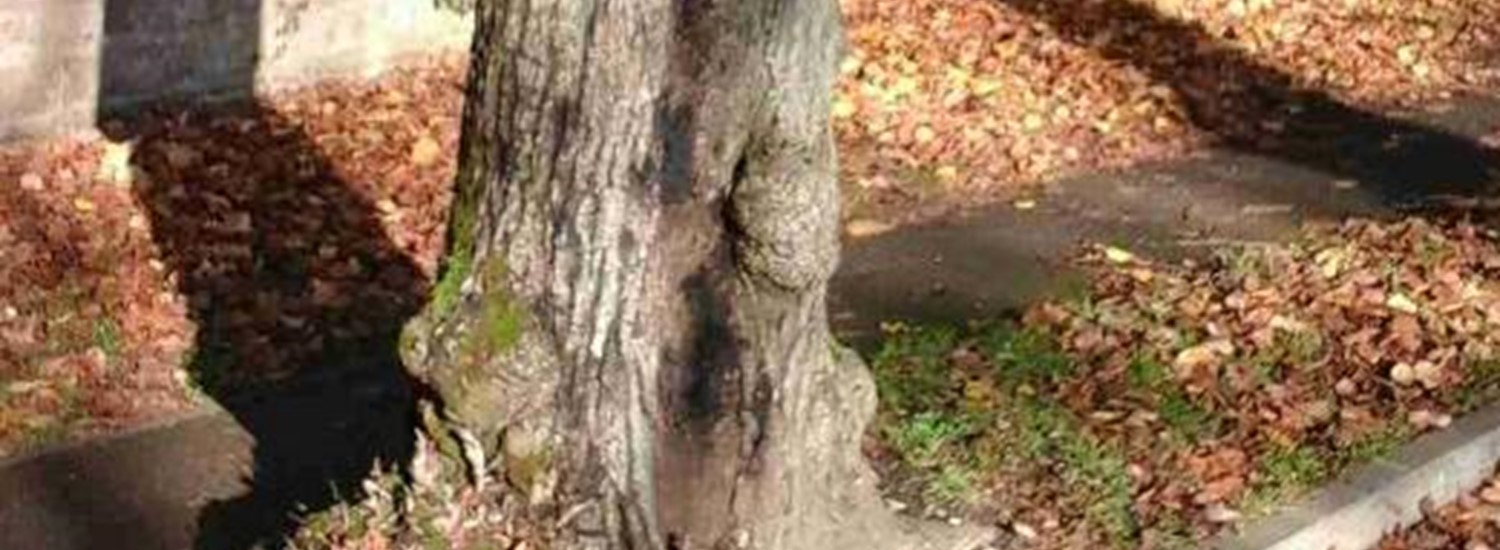
1. What is Phytophthora?
Phytophthora is a genus of fungi-like microscopic organisms that contain some of the most destructive pathogens of agricultural crops and forest trees in the world. There are over of 100 different species of Phytophthora, and whilst the host range will vary between species, most Phytophthoras are capable of attacking and killing a wide range of plants.
Several species are quarantine listed organisms, such as P. ramorum and P. kernoviae that affect a wide range of plants, whereas others have a more restricted host range. The presence of these or other exotic pathogens must be notified to the relevant plant health authority.
The species of Phytophthora confirmed by the Forestry Commission to be present in several Sheffield street trees is Phytophthora plurivora.
2. What are the symptoms?
Phytophthora species damage plants by killing tissues. Infection and resulting tissue death can occur in leaves, stems, or the roots. The symptoms may include the following:
• Leaf infections or “blight” where foliage develops a water-soaked appearance that develops into brown or black irregularly shaped spots or wedge-shaped lesions;
• Infection to the water conducting wood (xylem) beneath the inner bark of stems creates a “canker”, which may be localized or expand to girdle and/or the stem resulting in wilting in part of or all the canopy. Cankers are darkly discoloured necrotic lesions to the inner bark of a tree and are generally only visible once the outer bark has been removed, however they can cause reddish-brown liquid to ooze through the bark, giving the appearance of bleeding.
These are the symptoms visible on several Sheffield street trees.
It is important to understand that some Phytophthora species can cause multiple symptoms on a single host or cause different symptoms on different hosts and many other pathogens, pests, injuries, and environmental factors can cause similar symptoms.
3. Which trees are currently at risk?
The highway tree species confirmed as diseased so far have been limited to European lime (Tilia x europaea) and one newly planted oak (Quercus robur). This does not mean that other species cannot and have not been infected, but that no other species has yet exhibited the symptoms typically associated with the disease.
4. Are any species resistant?
There is too much variability in the genus of this pathogen to be able to confident that there are resistant tree species that do not suffer from the root-rotting form of the disease.
5. How does it spread?
Phytophthora species can infect plants through soil and airborne pathways and their spores are able to survive adverse environmental conditions:
• Soil borne Phytophthora species infect fine roots, the bark of roots or the collar region via motile zoospores, which are released during wet soil conditions and swim towards the potential host;
• Airborne Phytophthora species infect leaves, shoots, fruits and bark of branches and stems with specialised spores released during humid conditions on infected plant tissues which are then dispersed by rain and wind splash.
6. Why is it so serious?
Phytophthora infection is almost always fatal; it cannot be cured or easily irradiated. As such it poses a serious threat to the environment. A major epidemic could have far-reaching consequences for our urban tree population, particularly in areas where there are susceptible tree species such as limes.
7. What action will be taken?
Where Phytophthora has been identified in Sheffield’s street trees, infected trees have been recommended for removal to minimise the risk of further spread, especially where infected trees are adjacent to woodland.
8. How can you be sure Sheffield street trees are affected?
Symptomatic trees have been tested using Pocket Diagnostic Lateral Flow kits which are genus-specific for detecting Phytophthora. The portable tests can be carried out on a wide range of infected plant material, require no training and produce results within ten minutes. The kits have been independently validated using the European and Mediterranean Plant Protection (EPPO) standards.
Where Phytophthora outbreaks have been confirmed, samples have been sent to the Forestry Commission’s Tree Health Advisory and Diagnostic Service to identify the species involved and for advice on what action should be taken.
9. How do you know the disease hasn’t spread to neighbouring trees?
It is impossible to confirm whether a neighbouring tree has been infected until it is displaying symptoms associated with the disease. It is then that it will be tested.
10. Why don’t you test all Sheffield’s street trees?
The test for Phytophthora requires that there are specific symptoms to extract a sample, such as infected foliage or bark. Removing bark tissue on apparently healthy trees could leave them unnecessarily vulnerable to other pathogens/disease.
11. How many of Sheffield’s street trees are affected?
As of February 2019, we suspect the presence of Phytophthora in 20 highway trees. Samples have been sent to the Forestry Commission for confirmation and we await the results.
12. Which areas of the city are affected?
All confirmed or suspected outbreaks are currently localised in three areas in the south west of the city. They are in or around Thornsett Road in Nether Edge, Park Avenue, Endcliffe Grove Avenue and Whitley Wood Road.
Samples from these sites have been submitted to the Forestry Commission for identification and to date, we have received confirmation that Phytophthora plurivora is present in six trees on Whitley Wood Road.
13. Are other trees at risk? How many?
Given the way that the infection is spread, it’s likely that more trees will be affected.
We will be increasing monitoring for potential symptoms in the immediate area around all confirmed cases. All street trees are inspected by experienced Arboriculturists and the public can also help by being vigilant and to report symptoms to Streets Ahead should they see them.
Our aim is to minimise the risk of spread by spotting symptoms and responding quickly.
For information on what to look for and how to report symptoms please see the following web site: https://www.gov.uk/government/collections/tree-pests-and-diseases#identify-a-tree-pest-or-disease
14. Are people’s private or garden trees likely to be affected?
Yes, it’s likely as Phytophthora affects a wide range of plants.
For information on what to look for and how to report symptoms please see the following web site: https://www.gov.uk/government/collections/tree-pests-and-diseases#identify-a-tree-pest-or-disease
15. Do the affected trees really need to be removed?
Yes, so that we can reduce spread of disease and prevent major outbreak in the city’s street trees and woodland.
16. How quickly do you need to act?
Now that we have confirmation from the Forestry Commission of Phytophthora plurivora in six trees on Whitley Wood Road, we need to remove these trees before the end of March this year.
17. What are you doing to prevent the spread?
Once the tree is removed from site, all tools, work materials, work clothing and even vehicle tyres are likely to need to be sterilised after work on each site to prevent the spread.
This could even go as far as having a foot dip for work boots, and we may have to completely close a road to all pedestrians as well as vehicles during the works, or require pedestrians to walk through the “dip” to prevent pedestrian trafficking of infected plant material and further spreading.
This may also lead to a wider than typical working cordon.
18. Are other UK cities affected?
Phytophthoras are known to be causing problems all around the country. There is more information about plant and tree health on the Forestry Commission web site, https://www.forestry.gov.uk/england
19. Will the diseased trees be replaced?
Unfortunately this species of Phytophthora has a wide host range and so it is possible that replacement trees could also be affected. Furthermore Phytophthora can survive in the soil for long periods. Replacing the soil in the planting holes would reduce this possibility of reinfection although it might not completely eliminate it.
Therefore, we will consider all options for replacement and review more resistant species, such as Maidenhair trees, as suitable and hardy alternatives.
